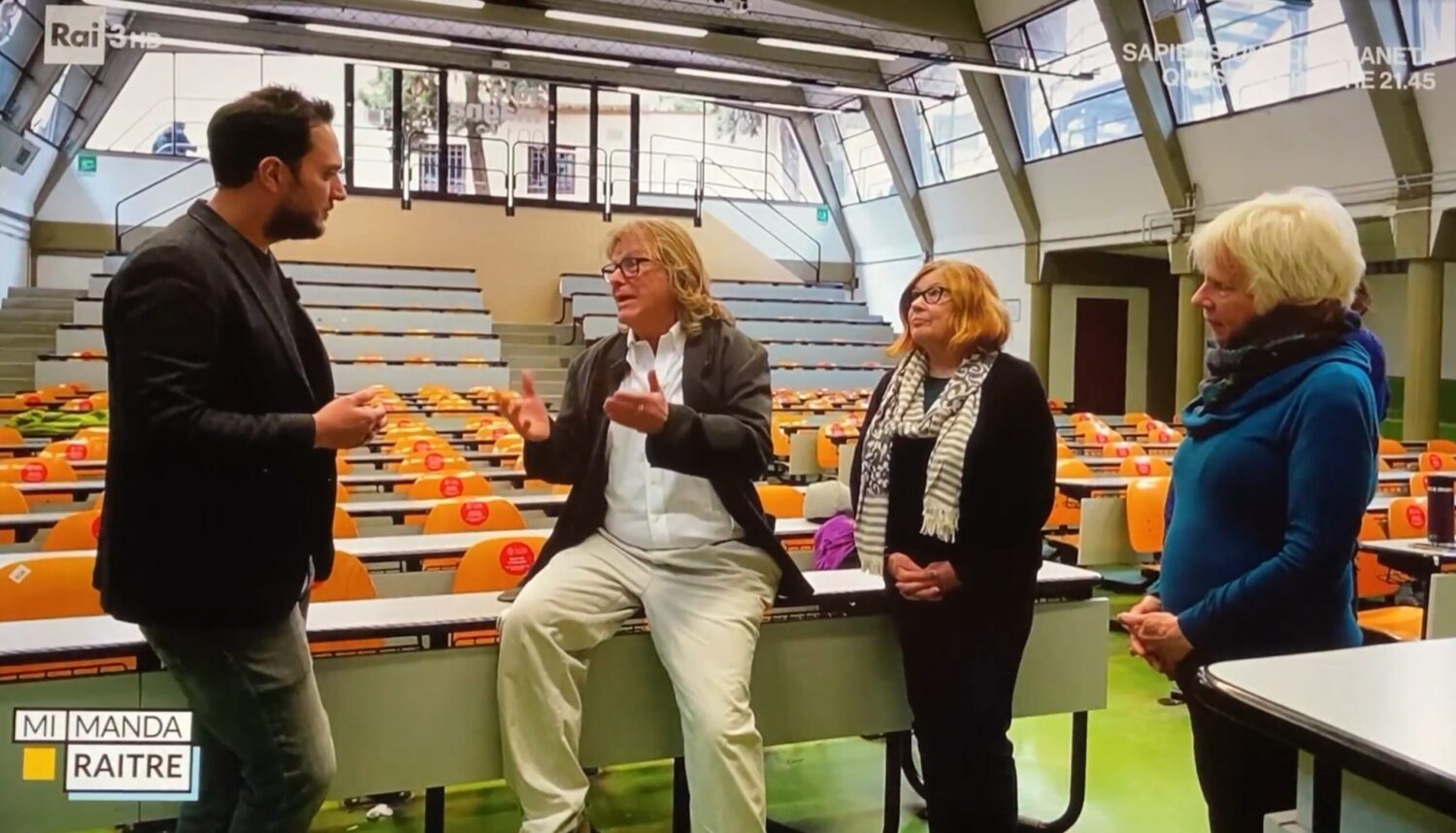Last weekend, Rai 3, a television channel of Italy’s national broadcasting service, aired a programme on Italy’s failure to fulfil its obligations as a member of the European Union. How adherent a member state is to these obligations is measured by the number of infringement proceedings taken against it by the European Commission for perceived breaches of Treaty commitments. Widely perceived as one of the most pro-European states, comparative statistics of infringement proceedings taken by the Commission against member states over time show that Italy has a markedly poor record in respecting EU law.
Not surprisingly, the discrimination against “Lettori”, the non-national teaching staff in Italian universities, was addressed in the Rai 3 programme. The discrimination represents the longest-running breach of the parity of treatment provision of the Treaty in the history of the EU. Further, it is newsworthy in that last July the Commission took the decision to refer yet another infringement case against Italy to the Court of Justice of the European Union (CJEU). A series of articles in The European Times traces the legal history of the Lettori and their campaign against the discrimination they have suffered from the first of the Allué rulings in 1989 to the decision of the College of Commissioners to refer the latest infringement proceedings against Italy to the CJEU in July of last year.
John Gilbert is National Lettori Coordinator for FLC CGII, Italy’s largest trade union. Interviewed by Rai 3 at the University of Florence, where he teaches, he briefly outlined the background to the discrimination case under scrutiny. In the line of litigation which leads from the Allué ruling of 1989 to the pending infringement case against Italy, the Lettori have won 4 cases before the CJEU on the issue of parity of treatment with their Italian colleagues. This statistic most probably shocked the Rai audience, given the general perception that sentences of the CJEU are final and definitive. The duration of the litigation has meant that many Lettori have retired without ever having worked under the non-discriminatory conditions to which the parity of treatment provision of the Treaty entitles them. Further, the discrimination is also in effect a gender-based discrimination: 80% of the 1,500 Lettori who teach or have taught before retirement in the Italian universities are women, Mr. Gilbert pointed out.
That FLC CGIL, the largest trade union in the country, would call on the European Commission to prosecute Italy for its discriminatory treatment of the non-national Lettori was obviously a persuasive point for an audience of Italian viewers. Mr. Gilbert referred to the seven recent representations to Commissioner for Jobs and Social Rights, Nicolas Schmit, in favour of the Lettori. In addition to these representations, and together with Asso.CEL.L, an official complainant in the Commission’s infringement proceedings against Italy, FLC CGIL conducted a national Census of Lettori, which documented to the commission‘s satisfaction the prevalence of discrimination against Lettori in the Italian universities and was influential in the opening of the present infringement proceedings.
The coverage of the Lettori case by RAI, the official national broadcaster, continues the recent interest shown in the Lettori case by the Italian media. The one-day FLC CGIL strike of June 2023 in campuses across Italy was well covered in sympathetic local Italian media, with television coverage of the protests in Florence. Padova, and Sassari. The national broadcaster was particularly sympathetic to the Lettori case, stressing their high qualifications and the fundamental teaching role the Lettori play in the Italian universities. As an investigative, current-affairs programme, the conclusions drawn will carry weight with public opinion. In particular, Rai 3 was scathing that a discrimination which could eventually result in the imposition of heavy fines on Italy should have been allowed to continue for decades in defiance of CJEU sentences.
As yet, no date has been set for the hearing in the Commission’s case against Italy, listed in the CJEU register as Case C-519/23. Beyond the obvious interest shown in Italy, the case is being closely followed across Europe, especially by scholars of EU law. This is because the history of the case and the issues at stake go to the very heart of the efficacy of the infringement proceedings as a means to enforce EU law. For a better understanding of these undoubtedly complex issues and their important implications for the administration of EU justice, it is instructive to recall the 2006 enforcement ruling of the CJEU in Case C-119/04. It was for non-implementation of this ruling that the Commission took the infringement case which is now pending before the Court.
In Case C-119/04, the Commission recommended the imposition of daily fines of €309.750 on Italy for its continuing discrimination against Lettori. Italy enacted a last-minute law in March 2004, the provisions of which the CJEU held could remedy the discrimination. In the absence of evidence in the depositions as to whether this law had been properly implemented, the Court declined to fine Italy. That the Commission opened follow-on infringement proceedings clearly shows that it takes the view that the provisions of the March 2004 law were never subsequently correctly implemented.
The Lettori case then gives rise to a number of important considerations in relation to the conduct of infringement proceedings:
1. The Treaty provisions for infringement proceedings: The Treaty of Rome empowered the Commission to take infringement proceedings against member states for perceived violation of Treaty obligations. Later, a provision of the Treaty of Maastricht further empowered the Commission to take enforcement proceedings for non-implementation of infringement rulings and gave the CJEU the power to impose fines for non-compliance. Clearly, then the enforcement proceedings were introduced to bring closure. The Lettori case shows they have failed to do so.
2. Evidence: In Case C-119/04 the judges pointedly noted that there was no evidence from the Lettori in the Commission depositions to counter Italy’s claims that the March 2004 law had been correctly implemented. Had this evidence been made available to the Court, the case would obviously have had a very different outcome. Safeguards are needed to ensure that complainants, on whose behalf the Commission takes infringement proceedings, can check and respond to the deposition evidence of member states.
3.The confidentiality requirement. Though infringement proceedings are taken on behalf of complainants, the complainants are not technically party to the proceedings, and exchanges between the Commission and the member state remain confidential. In fairness to the Commission, it has gathered ample documentation from the Lettori complainants over the course of the present proceedings. However, under present arrangements, complainants remain in the dark as to a member state’s response to their submissions. At “La Sapienza” University of Rome, for example, the Commission has been informed that a contract deemed discriminatory in a 2001 ruling of the CJEU remains in force today. Lettori, in service for decades, can receive the same pay as colleagues hired years after the Allué rulings in defiance of the same 2001 judgement. Access to a member state’s counterarguments in situations like these would be instructive and helpful for complainants.
4.Retrospective member state legislation to interpret CJEU rulings
Following on the ruling in Case C-119/04 and the Court’s acceptance that the terms of the Italian law of March 2004 could remedy the discrimination, local Italian courts routinely awarded Lettori plaintiffs uninterrupted settlements for reconstructions of career from the date of first employment. But, in December 2010 Italy enacted the Gelmini Law, a law which purported to provide an authentic interpretation of the March 2004 law, and by implication the attendant ruling of the CJEU.
Gelmini limits the full reconstruction of career due to Lettori to the year 1995-a limit nowhere prescribed in the CJEU ruling, or in the March 2004 law. At variance with rulings of the local Italian judiciary, it is also at variance with recent decisions of some Italian universities, such as Milan and Tor Vergata, which have awarded their Lettori uninterrupted reconstructions of career.
The point at stake here is obvious and does not need to be overlaboured. That a member state could be allowed to retrospectively interpret legislation on which the CJEU has already ruled, and to its own advantage, would set a precedent with very serious implications for the rule of law in the EU.
Kurt Rollin is Asso.CEL.L representative for retired Lettori. Commenting on the Rai 3 programme and the pending CJEU case against Italy, Mr. Rollin said:
“The intransigence of the Italian state has drawn the Lettori into a legal quagmire for over four decades. Despite recourse to all the available means for redress, Italy, with apparent impunity, has withheld our Treaty right to parity of treatment. It is heartening that RAI, Italy’s national broadcaster, and FLC CGIL, Italy’s largest trade union, have come out so clearly in favour of the non-national Lettori. Hopefully, the pending infringement case before the CJEU will deliver an overdue justice for our category.”














